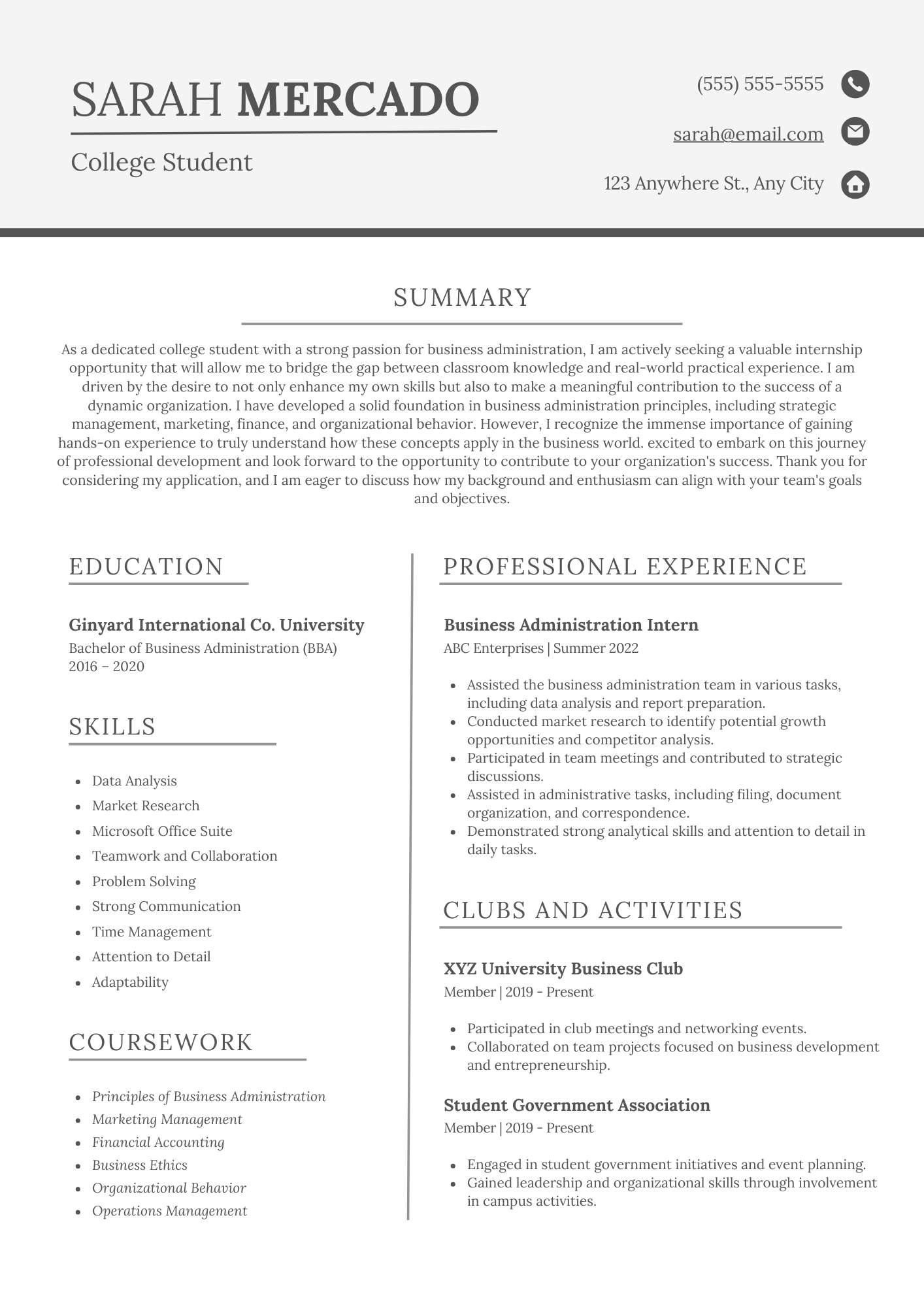Tips and Answers to Your College Student Resume Questions


Looking for details on how to write your College Student resume?
Our job-winning resume examples are here to help you get more interviews and land your dream job. Customize this resume or check out our other resume templates and create your own!
Customize your resume or check out our other resume templates and create your own!
College Student resume example
You can copy and paste the text below to customize your College Student resume.
What to include in a College Student resume
Creating an effective college student resume involves showcasing your skills, experiences, and qualifications relevant to the job you’re applying for, even if you don’t have a ton of on the job experience. Here are the key points to consider when crafting a college student resume:
Action words for a College Student resume
Bullet point examples for a College Student resume
As a college student, you may not have as much experience as those who are already in the working world – but that doesn’t mean you don’t have anything to put on your resume! Between transferrable skills, extracurriculars and what you learn in school, these are some resume bullet points that you can customize to your job – remember to use the xyz method when possible and where relevant:
Achieved top academic performance by maintaining a high GPA.
Developed leadership skills through extracurricular involvement.
Assisted professors with research projects and coursework.
Coordinated events and initiatives for student organizations.
Collaborated with team members to achieve project goals.
Organized events, meetings, and workshops for various clubs.
Executed marketing strategies to increase club memberships.
Presented research findings at academic conferences.
Facilitated group discussions and workshops on campus.
Initiated a fundraising campaign for a charitable cause.
Innovated new ideas to improve processes and outcomes.
Led group projects, encouraging collaboration and creativity.
Volunteered at community events and local organizations.
Contributed articles to the school newspaper or other publications.
Prepared and delivered presentations to classmates and faculty.
Influenced positive change within student organizations.
Engaged with the community through service and volunteering.
Negotiated partnerships and sponsorships for events.
Mentored underclassmen, offering academic and career guidance.
Fundraised for campus organizations and charitable causes.
Actively participated in group projects and discussions.
Adapted quickly to new technologies and software.
Solved problems creatively and efficiently within group projects.
Motivated peers to reach academic and personal goals.
Soft skills for a College Student resume
No bullet points found.
Best format and design for a College Student resume
The example above is a great place to start when it comes to the best College Student resume example format.
However, there are other factors to take into consideration, since every resume will need some personalizing from the above example.
Look at our resume templates if you’re interested in design aesthetics for your resume. The focus of your resume will be your abilities and experiences, but you will want to make sure that the design of your CV is clean, professional and has proper, consistent formatting, fonts and action-oriented bullet points
The resume example above is a good place to start, but if you’re curious, you can look at our dozens of resume templates for further design inspiration. Typically, College Student resumes need to be professional, modern and creative. Remember that you can apply any of our resume templates in our resume builder, and if you already have a template and resume, you can pass it through our resume grader to see how your resume stacks up against other college student resumes.
How to create a College Student resume
The most daunting part of creating a resume is simply getting started. Beyond that, make sure that you’re clear on the industry requirements: what are the key skills that your need to bring to the table? What are the wider workplace trends that you need to demonstrate? And what soft and technical skills are needed? Once you’ve done your research (and we hope this guide will help a lot with that) you can start to create your resume, beginning with the professional summary , work experience and skills sections, as these are often the most critical and therefore may time the longest to write. Make sure to include keywords that match the job description to get past the ATS and review the xyz framework to make sure you’re demonstrating the impact you can bring to the position and organization.